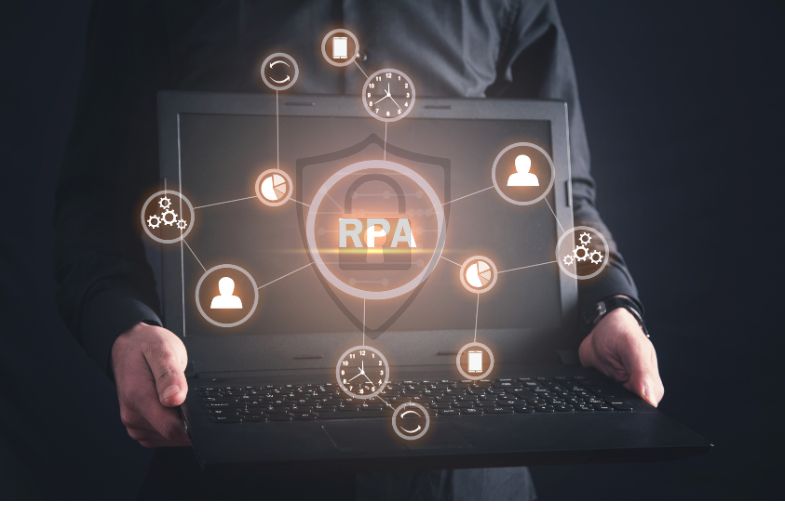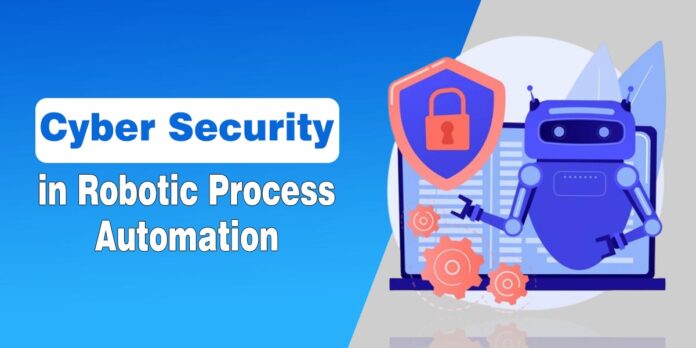This is the era of automation; machines perform manual labor today instead of human employees. All the tasks that a human worker would find tedious and nauseatingly boring can be done by machines. Software bots easily pick up on human habits and mimic them easily.
Robotic process automation makes it easier to create and deploy them. If these bots can perform manual labor without mistake, they can also prevent cyber security threats.
With RPA, IT experts can identify security risks, perform around-the-clock monitoring, respond to threats at once, and – most importantly – keep a company’s data safe. But what if RPA itself becomes vulnerable to cyber security issues?
That’s the problem I’ll discuss in this article.
You’ll learn about the latest security flaws in RPA. Then, I’ll discuss a few tips for implementing cyber security in robotic process automation.
Cyber Security Issues with Robotic Process Automation
Robotic process automation can significantly streamline operations, but it also introduces several cybersecurity challenges. One major concern is the potential for vulnerabilities in the bots themselves, which malicious actors can exploit to gain unauthorized access to sensitive data. Since robotic process automation (RPA) often interacts with various systems and applications, any lack of proper authentication and access controls can lead to data breaches.

Moreover, if businesses don’t implement robust monitoring and logging mechanisms, it becomes difficult to detect unusual bot behavior that might indicate a security incident. Addressing these issues is crucial to maintaining a secure automation environment in robotic process automation.
- Attended RPA: This one comes into play when you can’t fully automate a process.
- Unattended RPA: It involves a process where no human interference is required at all.
Whether you work in HR, customer service, finance, or operations, be on your guard regarding these major security challenges in RPA:
Data Misuse
Bots often access employees’ private info when managing payroll or transferring files. Workers’ personal info, such as their emails/passwords, medical history, credit card numbers, home addresses, etc., can be exposed in this way.
Unnecessary Layers
RPA frameworks implement automation by creating different layers. These layers come in the form of API and data exchange layers, which are easy for hackers to attack and bypass due to hidden system vulnerabilities. Many cases of RPA security failure are caused by coding errors or lack of proper testing as well.
Impersonating Bots
Sometimes, hackers impersonate bots instead of actual employees to cause data breaches. It’s important to catch these illegitimate pseudo-bots by assigning each bot a unique ID. In some cases, two bots end up sharing the same ID, and IT experts struggle to determine if one of them is a cybercriminal masquerading as a bot.
Careless Deployment
Given the “RPA rush,” many companies hastily deploy RPA systems without proper testing. They don’t even bother to implement the right security measures or protocols to control and curb misbehaving bots. As a result, the communication channels between their RPA and the back end remain unencrypted. Then, any hacker worth their salt can intercept the messages and find their way into the network!
Read Also: Best Workforce Management Software
7 Cyber Security Best Practices for Robotic Process Automation
A survey says that an average data breach cost about $4.45 million in 2022. One may assume that lots of companies are actively integrating better security measures into their RPA systems. Sadly, that’s not true for most companies. As 3 in 4 companies have already integrated RPA into their systems (and more are planning to imitate them shortly after), these security considerations will come in handy:
1. Follow Well-Defined Rules
RPA cyber security relies on a well-crafted, clearly defined governance framework. This framework will include the proper standards for developing and deploying bots. For instance, this framework could lay down standards for change management and process continuity.
It might dictate that a password vault where pass keys are kept to prevent data leakage due to hacking attempts should exist. Centralizing credential management is a good idea in RPA cyber security.
2. Encrypt Your Data
It goes without saying that data encryption is the basis of secure communication these days. The average cost of a single data breach is heart-stoppingly large; therefore, encrypting your sensitive data can save you money.
This way, your data becomes useless for a hacker who doesn’t have the key to decrypt this information.
3. Test RPA Bots Carefully
As stated above, improper testing and careless deployment won’t do you any good. Coding errors can also give cyber thieves a way into your system. That’s why you should develop bots carefully and test them rigorously before deployment.
Make sure your bots don’t have any malware – or they don’t acquire one post-implementation. For that, you must conduct regular audits in which the coding is inspected carefully. Be proactive and keep your bots interception-resistant.
4. Restrict User Access
Giving “universal access” to all employees is a pretty bad idea when it comes to RPA cyber security. Instead, businesses adopting robotic process automation must adopt access control measures as well, especially for the IT experts working in RPA environments.
These tech workers shouldn’t use personal IDs when trying to access the system. Instead, it’s smarter (and much safer) to use generic IDs.
5. Use Authentication Protocols
However, even switching to generic IDs won’t discourage cybercriminals from trying their best. That’s why each RPA bot must have unique IDs to prevent impersonation (as stated in the previous section).
Going a step further, you should also implement an MFA or multi-factor authentication system. Don’t let unattended RPA become a gateway for cyber criminals; instead, utilize human involvement to curb all IT threats.
Read Also: How to Use AI to Improve Business
6. Check Your Logs
Don’t forget about checking log integrity and looking out for unauthorized login attempts. Keep a record of log files against security breaches so you can later use them in RPA audits.
Also, safeguard the authority to read/delete log files; hackers may try to delete these files to erase any record of their malicious activities forever.
7. Keep Monitoring Bot Activity
Lastly, keep monitoring your bots to catch them if they start behaving by deviating from routine actions. It will make it easier to detect security breaches and proactively thwart any attempt to access your data.
It’ll also help if you inspect RPA scripts to make sure they haven’t turned malicious.
To Sum Up
Even though RPA plays a key role in improving cyber resilience, it isn’t without security flaws itself. Robotic process automation often creates a new attack surface or mishandling sensitive data.
You can increase your company’s exposure to IT risks by adopting RPA without proper security measures in place. Consider the security considerations shared above to implement RPA successfully.

